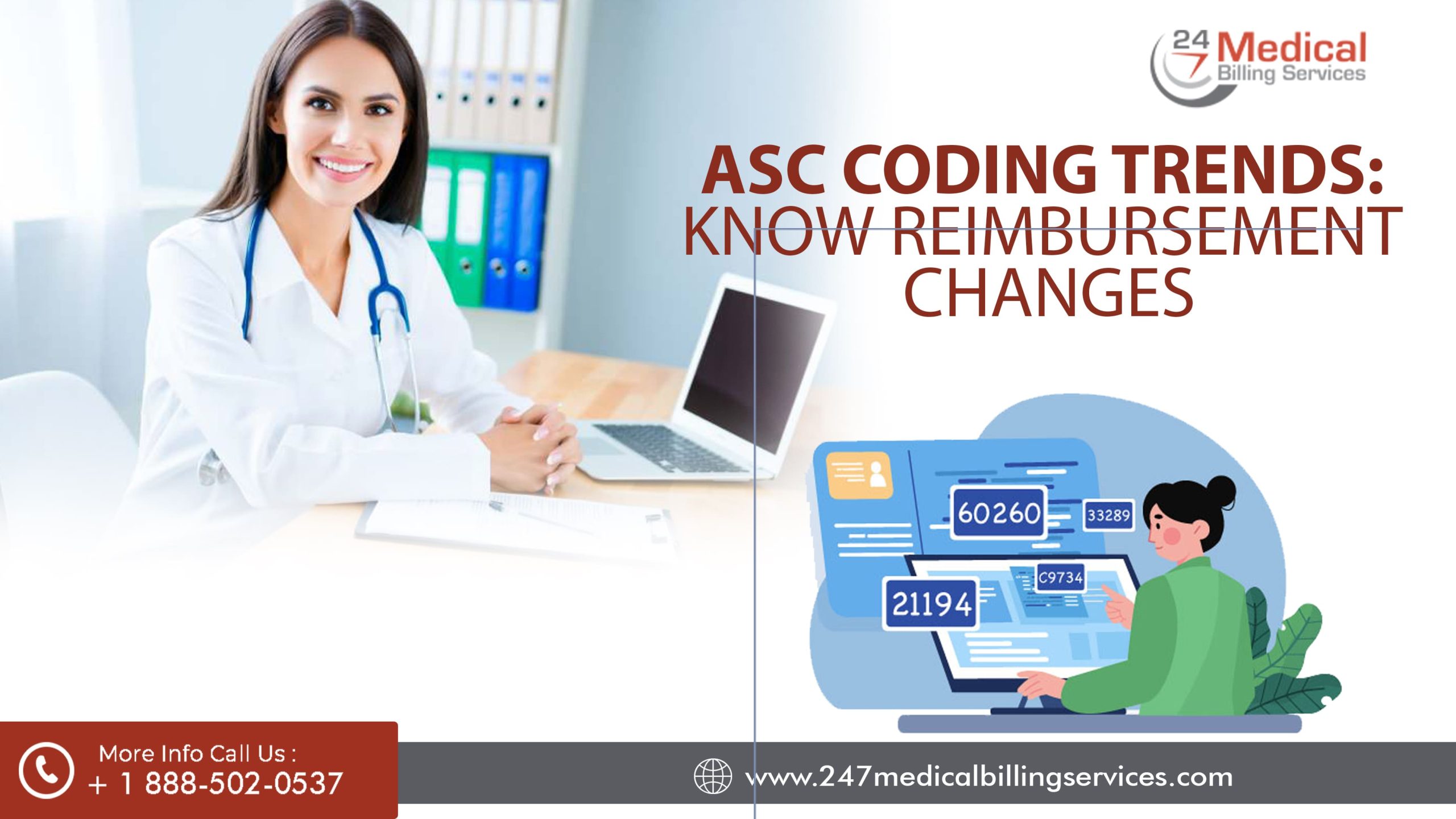
ASC Coding Trends: Know Reimbursement Changes
The reimbursement scenario for Ambulatory Surgery Centers (ASCs) is rapidly evolving, particularly with the introduction of new ASC-only C codes. Mastering these ASC Coding changes can position your center for long-term success.
Over the past few years, cardiovascular procedures have increasingly moved to outpatient settings such as office-based labs (OBLs) and ASCs. The Centers for Medicare & Medicaid Services (CMS) added coronary procedures to the ASC Covered Procedure List (CPL) in 2019 and 2020, allowing reimbursement for diagnostic cardiac catheterizations and low-risk percutaneous coronary interventions (PCI).
This blog explores recent ASC coding and reimbursement trends, highlighting best practices for optimal efficiency and accuracy.
Growth Despite Barriers
The expansion of cardiovascular procedures to ASCs has faced significant barriers. The COVID-19 pandemic, coinciding with the addition of PCI to the ASC CPL, initially slowed the flow of these procedures. Additionally, cardiovascular services remain highly regulated in many states, and hospitals are often hesitant to shift volume from Hospital Outpatient Departments (HOPDs) to ASCs due to lower reimbursement rates.Despite these challenges, same-day cardiac adoption has grown. An increasing number of ASCs are billing for PCI procedures. In 2019, only about 30 centers billed for these procedures; by 2023, this number had more than doubled to approximately 65. Interest is also growing among hospitals, physicians, and private investors in exploring how vascular procedures traditionally performed in OBLs and cardiac procedures in ASCs can utilize the same physical space while maintaining the financial benefits of each service setting. This interest has led to the development of the hybrid OBL/ASC model.
ASC Reimbursement and Billing Updates
When evaluating the best care setting for cardiovascular procedures—whether OBL, ASC, or hybrid—it is crucial to consider the reimbursement scenario, especially the new ASC-only C codes that impact cardiac and vascular procedures. These codes help identify products, devices, and services, expanding the cardiovascular work that can be done in ASCs and ensuring accurate billing and complete reimbursements from CMS.Adoption of C Codes and Net Payment Increases
CMS has made several updates to the reimbursement rates for cardiovascular procedures performed in ASCs. From 2020 to 2024, diagnostic cath and PCI procedures saw significant payment increases, ranging from 5% to 13%. Conversely, pacemaker reimbursements declined. A complexity adjustment factor introduced in the CY2023 ASC final rule increases reimbursement when an add-on code is performed with a primary procedure under certain coding circumstances.The new C codes are particularly beneficial for procedures like diagnostic cath and peripheral vascular interventions. For example, the C7516-C7529 code range can add an additional $900 in reimbursement for diagnostic cath cases. Studies show that about 15% of these cases involve intravascular ultrasound (IVUS), which increases when fractional flow reserve (FFR) utilization is included.
IVUS utilization is highest in ASCs and OBLs for peripheral vascular procedures, with about 40% utilization. Specific codes like C7531 and C7532 can gain an additional $2,321 in reimbursement. However, the C7535 code sees a net reimbursement decline of $1,825 due to its pricing ceiling. In the realm of pacemakers, new C codes provide an additional $3,346 in payment, which is the most significant net increase among all cardiac and vascular C codes. Notably, pacemaker C codes now reimburse slightly higher in ASCs than in HOPDs.
Best Practices for Cardiovascular Coding and Billing
Cardiovascular procedures in ASCs are relatively new compared to other specialties, necessitating expert resources and adopting new C codes. Therefore, the essential best practices include:- Exclusive ASC C Codes: The new C codes are allowable and payable only in ASCs.
- Combined Billing: When primary and secondary add-on procedures occur during the same encounter, the new C code must be billed instead of individual procedure codes.
- Code Combinations: In specific scenarios, combining C codes and Category 1 Codes is necessary, especially when reporting PCI codes.
- Education and Training: Inform ASC directors, clinical staff, coding teams, and physicians about the changes and provide ongoing education.
- Documentation Updates: Update all templates and documents, such as pre-authorization checklists, chargemaster, physician operative note templates, fee schedules, and any pre-built reports within the EHR.
- Chart Audits: Regularly audit charts to ensure proper documentation, code assignment, and reimbursement.
Sustainability of ASC Models
The sustainability of standalone OBLs and hybrid OBL/ASC models remains crucial. CMS's ongoing efforts to add more procedures to the CPL, increase ASC reimbursement, and introduce new bundled C codes specific to ASC settings favor an ASC-only model. This trend is likely to accelerate the shift of hospitals from OBL or hybrid models to ASC models, even among hospitals traditionally resistant to moving from HOPD to ASC settings. The new C codes can also spur volume growth at existing ASCs offering cardiac and vascular procedures.Outsourcing ASC Coding Services
As the complexity of ASC coding increases, many centers are turning to outsourcing as a solution. Outsourcing ASC coding services to 24/7 Medical Billing Services can help ensure accuracy and compliance. This company works with certified coders and is up-to-date with the latest coding guidelines and regulations. By outsourcing, you can reduce the risk of coding errors, claim denials, and delayed payments. The 24/7 Medical Billing Services team will also allow your staff to focus on patient care and other critical operational tasks, enhancing overall efficiency.

.png)